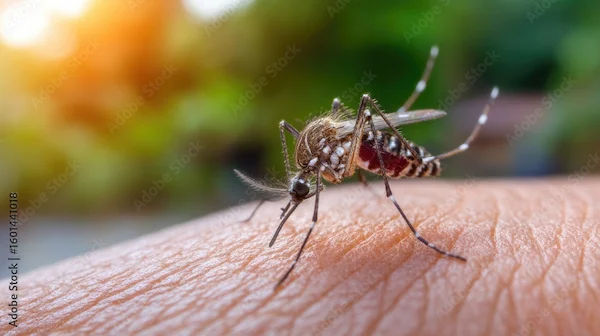Understanding Skin Fungal Infections and Treatments
Discover the causes, types, symptoms, and treatments of common skin fungal infections. Learn prevention tips and when to seek medical help for effective relief and care.

Written by Dr. Vasanthasree Nair
Reviewed by Dr. Mohammed Kamran MBBS, FIDM
Last updated on 28th Jul, 2025

Understanding Skin Fungal Infections and Treatments
Skin fungal infections are common, uncomfortable, and sometimes embarrassing, but the good news is that they are usually treatable. If you've ever experienced itching, redness, or flaky skin, you might have had a fungal infection. Let’s break down what these infections are, why they happen, and how you can manage and prevent them.
What Are Skin Fungal Infections?
Fungal infections occur when harmful fungi grow on the skin, nails, or hair. These fungi thrive in warm, moist environments, making certain areas of the body more prone to infection. Some common types include:
1. Ringworm (Tinea Corporis): A circular, red, itchy rash that can appear anywhere on the body.
2. Athlete’s Foot (Tinea Pedis): Affects the feet, causing itching, cracking, and peeling skin.
3. Jock Itch (Tinea Cruris): A red, itchy rash in the groin area.
4. Yeast Infections (Candidiasis): Often occurs in skin folds, causing redness and irritation.
5. Nail Fungus (Onychomycosis): Thickened, discoloured, or brittle nails.
Symptoms to Watch For
Fungal infections can present in different ways, but common symptoms include:
- Red, scaly, or flaky patches
- Itching or burning sensation
- Blisters or oozing in severe cases
- Discoloured or thickened nails (in nail infections)
- Foul odour (especially in athlete’s foot)
If you notice these signs, don’t panic—most fungal infections are easily treatable with proper care.
Consult Top Specialists If You Notice These Symptoms
What Causes Fungal Infections?
Fungi love warm, damp places, which is why infections often occur in sweaty or poorly ventilated areas. Common causes include:
- Sweating excessively: Creates a moist environment for fungi.
- Wearing tight or non-breathable clothing: Traps moisture against the skin.
- Walking barefoot in public showers or pools: Increases exposure to fungi.
- Weakened immune system: Makes it harder for the body to fight off infections.
- Poor hygiene: Not drying skin properly after bathing can encourage fungal growth.
How to Treat Fungal Infections?
Most mild fungal infections can be treated with over-the-counter antifungal creams, sprays, or powders. Common active ingredients include:
- Clotrimazole
- Miconazole
- Terbinafine
For persistent or severe infections, a doctor may prescribe oral antifungal medications or stronger topical treatments.
Home Care Tips
1. Keep the area clean and dry: Fungi thrive in moisture, so pat skin dry after washing.
2. Wear breathable fabrics: Cotton and moisture-wicking materials help reduce sweating.
3. Avoid sharing personal items: Towels, shoes, and socks can spread infection.
4. Change socks and underwear daily: Prevents reinfection.
5. Use antifungal powders: Helps keep feet and groin dry.
Preventing Future Infections
Prevention is always better than cure! Here’s how to reduce your risk:
- Dry skin thoroughly: Especially between toes and skin folds.
- Wear flip-flops in public showers: Protects feet from exposure.
- Rotate shoes: Gives them time to dry out between uses.
- Maintain good hygiene: Wash regularly and change clothes after sweating.
- Boost immunity: A healthy diet and lifestyle help your body fight infections.
When to See a Doctor
While most fungal infections clear up with home treatment, consult a doctor if:
- The infection spreads or worsens.
- You have diabetes or a weakened immune system.
- The infection keeps coming back.
- You notice pus, severe pain, or fever (signs of a bacterial infection).
If you’re unsure about your symptoms or need expert advice, you can easily book a dermatology consultation on Apollo 24|7 for professional guidance and treatment.
Conclusion
Skin fungal infections are common and nothing to be ashamed of. With proper hygiene, timely treatment, and preventive measures, you can keep your skin healthy and infection-free. If you’re struggling with persistent symptoms, don’t hesitate to seek medical help—Apollo 24|7 makes it easy to get expert care from the comfort of your home.
Consult Top Specialists If You Notice These Symptoms
Consult Top Specialists If You Notice These Symptoms
Dr. Kavitha Killaparthy
Dermatologist
23 Years • MBBS,DIPLOMA(DERMATOLOGY,VENEREOLOGY,LEPROSY)
Hyderabad
JDS Skin & Hair Clinic, Hyderabad
Dr. Mayuri Jain
Dermatologist
11 Years • MBBS, MD Dermatology , Venereology & Leprosy
Delhi
Dr Mayuri Jain Clinic, Delhi

Dr Ekansh Shekhar
Dermatologist
10 Years • MBBS MD
Lucknow
Apollo Clinic Hazratganj, Lucknow
Dr.j Girishma
Dermatologist
6 Years • MBBS MD DERMATOLOGY
Bengaluru
Apollo Medical Center, Marathahalli, Bengaluru
Dr. Praveen Kumar
Dermatologist
5 Years • MBBS, MD DVL
Yenugonda
SVS Hospital ., Yenugonda
Consult Top Specialists If You Notice These Symptoms
Dr. Kavitha Killaparthy
Dermatologist
23 Years • MBBS,DIPLOMA(DERMATOLOGY,VENEREOLOGY,LEPROSY)
Hyderabad
JDS Skin & Hair Clinic, Hyderabad
Dr. Mayuri Jain
Dermatologist
11 Years • MBBS, MD Dermatology , Venereology & Leprosy
Delhi
Dr Mayuri Jain Clinic, Delhi

Dr Ekansh Shekhar
Dermatologist
10 Years • MBBS MD
Lucknow
Apollo Clinic Hazratganj, Lucknow
Dr.j Girishma
Dermatologist
6 Years • MBBS MD DERMATOLOGY
Bengaluru
Apollo Medical Center, Marathahalli, Bengaluru
Dr. Praveen Kumar
Dermatologist
5 Years • MBBS, MD DVL
Yenugonda
SVS Hospital ., Yenugonda




